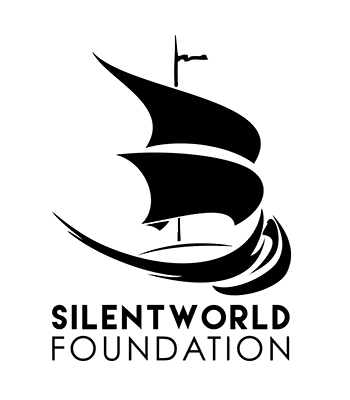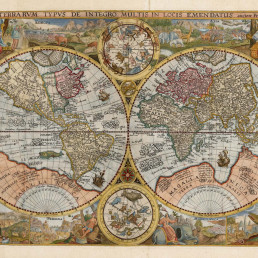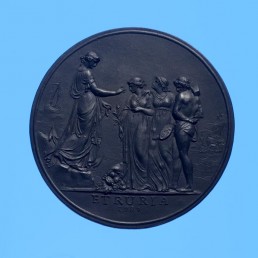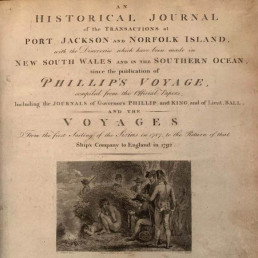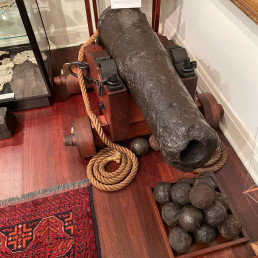
Name/TitleThe Sydney Gazette and New South Wales Advertiser, Volume 1 Number 1
About this objectThe Sydney Gazette and New South Wales Advertiser. The first newspaper printed in Australia, and one of the earliest pieces of printing in the colony. This item was part of the first newspaper in Australia on the first day it was printed. Furthermore, it was in the first issue of the publication on that day.
It seems that issues from the first year of publication are held only in the State Library of New South Wales in Australia, and otherwise in the British Library and the Public Record Office, London. The two sets in the National library begin in 1804. The present set contains the first two and two later numbers, altogether four of the first seven issues of this ephemeral publication.
George Howe, Australia’s first printer, sometimes referred to as Sydney’s Caxton, had been appointed Government printer at the beginning of 1802; publication of the ‘Sydney Gazette’ was authorised by Governor King, but although officially sanctioned, it was published by Howe at his own risk and expense. The first number appeared on the 5th March 1803; publication was weekly, and contributions were received in two boxes, in Sydney and Parramatta. The expenses of the Gazette were met by the receipts from advertisements and by the sale at 6d. per copy.
Howe was editor, under the censorship of the secretary to the governor, who examined all proofs. He met with many difficulties in the production. He had to make his own ink and was frequently troubled with the shortage of paper (Historical Records of Australia, IV, pp. 662-3). Some sixteen years later, in his Christmas issue of 1819, Howe reminisced about the early history of his newspaper “he bought the paper at a very dear price, he distributed his type, he invented and obtained new matter, without any auxiliary assistance; he worked the paper off at press; and he afterwards carried it out, that is to say, delivered it to Sydney subscribers. His subscribers at one period were under 350…”. The importance of the Sydney Gazette as a source of Australian history cannot be overstated.
MakerGeorge Howe - Author/Maker
Maker RoleAuthor/Maker
Date Made1803
Period19th century
Place MadeSydney, Australia
Series TitleThe Sydney Gazette and New South Wales Advertiser
Number in Series1
Medium and MaterialsPaper and ink.
Object TypeManuscripts and Ephemera
Object numberSF000720
Copyright Licence![]() Attribution - Non-commercial - No Derivatives (cc)
Attribution - Non-commercial - No Derivatives (cc)
Explore by category
Maps and Charts
Date range: 1541-1836
Ship Models
Date range: 1629-1890
Maritime Paintings
Date range: 1793-1849
Manuscripts and Ephemera
Date range: 1768-c1850
Medallions & Convict Tokens
Date range: 1619-1880
Landscapes
Date range: 1768-c1850
Books
Date range: 1694-c1850
Currency and Shares
Date range: 1624-1823
Printed Material
Date range: 1541-1836
Maritime Archaeology
Date range: 1629-1854
Curator's corner
New acquisitions, staff favourites and curios
The mug is decorated with an underglaze and a blue transfer print. On the body, it is titled ‘Emigrants to Australia’. This type of body and glaze was discontinued by 1840. Comparison of the handle shape and the profile of the foot, point to the attribution of manufacture by the Davenport Factory.
Delta was a ship-rigged vessel with two decks and three masts. It was built in Dordrecht, Netherlands in 1839 at the shipyard of Jan Schouten and registered in the same port. Its hull was constructed of oak and sheathed in ‘yellow metal’. Delta was owned by H. van der Sande at the time of its loss and was engaged as a cargo trader.
The Delta carried 29 crew and passengers, while sailing from Melbourne to Batavia in ballast when wrecked at Kenn Reefs on 30 May 1854 whilst under the command of Captain J.G. Kunst. This vessel loss supports the pattern of shipwrecks located on a well-travelled shipping route that was poorly charted until the mid-nineteenth century. The crew of the Delta could see four other shipwrecks at Kenn Reefs at the time of their vessel’s loss.
Important image of a ship associated with Matthew Flinders, that would shortly become one of the most famous early shipwrecks in eastern Australian waters. This is a fine ship’s portrait, by one of the great exponents of the art
